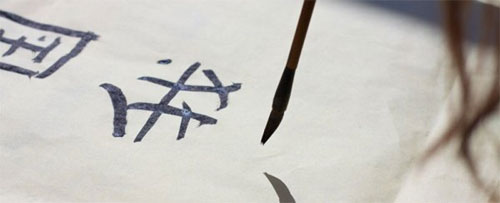Ancient Chinese Ink Could Hold a Surprising New Way to Kill Cancer Cells

For centuries, Chinese artists and calligraphers have used their inks to tell countless stories of the world we live in – and now their medium could have a new purpose.
Scientists have discovered that a traditional plant-based Chinese ink called Hu-Kaiwen ink contains distinctive molecular properties that aren’t just suited to inscribing messages on paper – they’re also ideal for killing cancer cells.
A Chinese team led by researchers from Fudan University in Shanghai began looking into Hu-Kaiwen ink (aka Hu-ink) after noticing its similarities to artificial nanomaterials used in an emerging cancer treatment called photothermal therapy (PTT).
PTT involves injecting substances containing these nanomaterials into tumours in the body, which are then targeted by a laser. Once the laser hits the nanomaterial package deployed in the cancer cells, the cells heat up and die.
One of the problems with this Trojan Horse though is finding the right kinds of materials to inject into the body.
A number of artificial nanomaterials have been investigated by researchers looking into PTT – including engineered carbon nanotubes and graphene – but have been found to be either toxic, expensive to produce, or difficult to make.
But the slick, black consistency of Hu-Kaiwen ink looked like it might tick all the boxes scientists are looking for in a PTT candidate: the right color for absorbing light and heat, stable in water, not prohibitively expensive or complex, and – importantly – not toxic to the body.
To test their hypothesis, the researchers analyzed the ink in an aqueous dispersion and found it consisted of aggregates of small carbon nanoparticles, which could heat up to 55 degrees Celsius (131 degrees Fahrenheit) after just 5 minutes of near-infrared irradiation – greater thermal absorption than most artificial PTT materials.
What’s more, the ink displayed great stability, which means it could retain these properties for long periods of time.
“We found that the photothermal effect of Hu-ink showed almost no change with increasing storage time for 90 days”, the researchers explain in their study, “revealing that Hu-ink presented stable photothermal effect”.
During testing in the lab, the ink was found to be bio-compatible with human cells in a dish under normal conditions, but when heated killed cancer cells, showing greater efficiency at the same laser strength when the Hu-ink concentration was increased. In separate tests with mice the ink was also highly effective, killing more cancer cells than a conventional PTT treatment, and again, no toxicity was observed in the animals injected.
“No pathological damage was detected in the pathological sections of major organs, including brain, heart, lung, spleen, liver, and kidney”, the team explains. “In the course of the whole treatment, the weight of mice did not change. Therefore, our obtained Hu-ink had no significant side effect and exhibited good biocompatibility”.
As for whether we’d see the same promising results in human tests remains an open question for now, but the team definitely thinks the ink should be investigated in human trials.
If those trials end up going ahead in the future, this ancient ink may end up playing an even greater role in the story of human life – by saving it.
yogaesoteric
September 19, 2018
